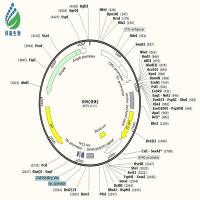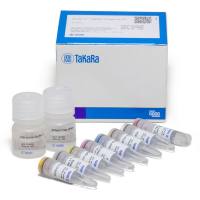Screening for Aging-Dependent Point Mutations in mtDNA
互联网
680
Recently, clear evidence has been obtained in our laboratory of a large accumulation of specific point mutations at the same critical control sites for replication in mitochondrial DNA (mtDNA) of human fibroblasts (
1
) and skeletal muscles (
2
). This demonstration was based on the use of a very sensitive method for denaturing gradient gel electrophoresis (DGGE) (
3
,
4
) that can identify 2-4% single mismatches in artificially produced heteroduplexes and that is suitable for simultaneous screening of a large number of samples, in combination with cloning and sequencing. The overall approach is illustrated schematically in Fig. 1 . The approach requires the use of mtDNA that has been highly purified from total cell DNA, in order to minimize the possible interference by nuclear mtDNA pseudogenes, which have complicated the identification of mtDNA mutations in previous investigations (
5
,
6
). As shown in Fig. 2 for the main mtDNA control region, the particular mtDNA region chosen for analysis in our work is subdivided into several segments, each exhibiting a single melting domain, thus becoming analyzable by DGGE (
see
Fig. 3 ). The various segments are then screened by a highly sensitive new version of the latter mentioned technique (
4
), using a large number of DNA samples from differently aged individuals. The segments that show evidence of heterogeneity by DGGE analysis, indicative of the presence of mutations, will be selected for further study. This will involve cloning of the polymerase chain reaction (PCR) product of each segment in
Escherichia coli
, the isolation of 48 plasmids, and PCR amplification of the cloned segment from their DNAs. The PCR products will then be subjected to a second DGGE step, after
Fig. 1.
Scheme of the overall approach. This comprises the following three procedures: (1) isolation of highly purified mtDNA; (2) preliminary screening of the mtDNA samples for the presence of mutations by first-round DGGE, then cloning of the whole
Init-Tra-Rep
fragment (
Fig. 2
), followed by second-round DGGE and sequencing; (3) allele-specific termination of primer extension to carry out a large-scale screening of mtDNA samples for the identified mutations.
Fig. 2.
Main control region of human mtDNA. This region contains the initiation sites for rDNA (I
H
1), whole heavy-strand (P
H
2) and light-strand transcription (I
L
), and the primary origin (O
H1
) and secondary origin (O
H2
) of heavy-strand DNA synthesis. The map positions of the CSB1, CSB2, and CSB3 (conserved sequence blocks 1, 2, and 3, respectively), of mtTFA binding sites, of the DLP segments and TRNA1 segment chosen for DGGE analysis, and of the large fragment, encompassing all the initiation sites for transcription and the primary and secondary origins of heavy-strand DNA synthesis (
Init-Tra-Rep
), used for cloning are also shown.
Fig. 3.
Structure of the PCR product with attached psoralen used for DGGE
(A)
, and principle of mutation detection by DGGE
(B)
. For details, see
ref. 4
.









